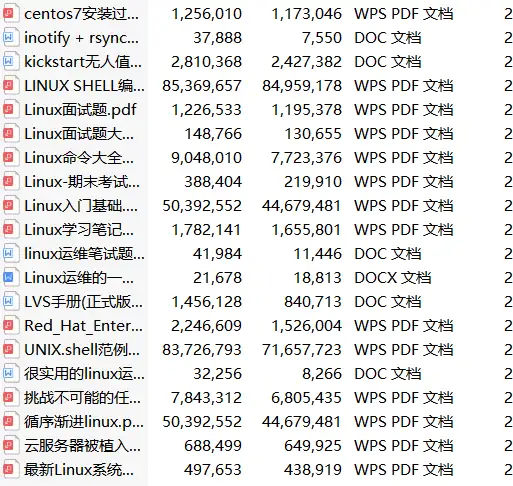Nginx高并发场景下的性能调优与架构设计:从入门到实战的完整指南
引言:为什么你需要掌握Nginx性能调优?
在一次双十一大促中,我们的电商平台在活动开始后3分钟内涌入了800万用户,QPS瞬间飙升到50万。就在所有人都捏着一把汗的时候,经过优化的Nginx集群稳稳地扛住了这波流量冲击,CPU使用率始终保持在60%以下。
这就是Nginx性能调优的威力。
如果你正在面临以下问题:
- • 网站访问量激增时频繁出现502/504错误
- • Nginx CPU占用率居高不下,但QPS却上不去
- • 不知道如何设计高可用的Nginx架构
- • 想要榨干服务器性能,但不知从何下手
那么这篇文章将帮你彻底解决这些问题。我将分享过去5年在大厂处理千万级并发的实战经验,包括那些踩过的坑和独家优化技巧。
一、性能基准测试:知己知彼
在开始优化之前,我们需要先了解当前系统的性能基线。很多人一上来就调参数,这是典型的错误做法。
1.1 压测工具选择与使用
# 使用wrk进行基准测试
wrk -t12 -c400 -d30s --latency http://your-domain.com/
# 使用ab进行简单测试
ab -n 100000 -c 1000 http://your-domain.com/
# 使用vegeta进行更精准的测试
echo "GET http://your-domain.com/" | vegeta attack -duration=30s -rate=10000 | vegeta report
实战技巧:压测时要监控以下关键指标:
- • QPS/TPS
- • 响应时间分布(P50、P95、P99)
- • 错误率
- • CPU/内存/网络/磁盘IO使用率
1.2 性能瓶颈定位
通过我的经验,Nginx性能瓶颈通常出现在这几个地方:
- 1. 连接数限制:系统默认的文件描述符限制
- 2. CPU瓶颈:worker进程数配置不当
- 3. 内存瓶颈:缓冲区设置不合理
- 4. 网络IO瓶颈:网卡中断处理不均衡
- 5. 磁盘IO瓶颈:日志写入拖慢整体性能
二、系统层面优化:打好地基
2.1 内核参数优化
这是我在生产环境使用的一套优化参数,可以直接复制使用:
# /etc/sysctl.conf
# 系统级别最大文件句柄数
fs.file-max = 2000000
fs.nr_open = 2000000
# 网络优化
net.core.somaxconn = 65535
net.core.netdev_max_backlog = 65535
net.ipv4.tcp_max_syn_backlog = 65535
net.ipv4.tcp_fin_timeout = 10
net.ipv4.tcp_tw_reuse = 1
net.ipv4.tcp_tw_recycle = 0
net.ipv4.tcp_keepalive_time = 120
net.ipv4.tcp_keepalive_intvl = 30
net.ipv4.tcp_keepalive_probes = 3
# TCP缓冲区优化
net.core.rmem_default = 262144
net.core.wmem_default = 262144
net.core.rmem_max = 16777216
net.core.wmem_max = 16777216
net.ipv4.tcp_rmem = 4096 262144 16777216
net.ipv4.tcp_wmem = 4096 262144 16777216
# 连接跟踪表优化
net.netfilter.nf_conntrack_max = 1000000
net.nf_conntrack_max = 1000000
net.netfilter.nf_conntrack_tcp_timeout_established = 1200
# BBR拥塞控制算法(内核4.9+)
net.core.default_qdisc = fq
net.ipv4.tcp_congestion_control = bbr
关键点解析:
- •
tcp_tw_reuse:允许TIME_WAIT套接字重用,对于高并发短连接场景效果显著 - •
somaxconn:决定了Nginx的backlog上限,必须调大 - • BBR算法:Google开发的拥塞控制算法,在高延迟网络下性能提升明显
2.2 文件描述符限制
# /etc/security/limits.conf
* soft nofile 1000000
* hard nofile 1000000
* soft nproc 1000000
* hard nproc 1000000
# 对于systemd管理的服务,还需要修改
# /etc/systemd/system/nginx.service.d/override.conf
[Service]
LimitNOFILE=1000000
LimitNPROC=1000000
三、Nginx配置优化:核心调优
3.1 全局配置优化
# nginx.conf
user nginx;
# worker进程数建议设置为CPU核心数
worker_processes auto;
# 每个worker进程最大连接数
worker_rlimit_nofile1000000;
# 绑定worker进程到指定CPU核心,减少CPU切换开销
worker_cpu_affinity auto;
# 错误日志级别设置为error,减少IO
error_log /var/log/nginx/error.log error;
events {
# 使用epoll事件驱动模型(Linux)
useepoll;
# 每个worker进程的最大连接数
worker_connections65535;
# 开启高效文件传输模式
multi_accepton;
# 优化同一时刻只有一个请求的问题
accept_mutexoff;
}
http {
# 基础优化
sendfileon;
tcp_nopushon;
tcp_nodelayon;
# 连接超时优化
keepalive_timeout65;
keepalive_requests10000;
reset_timedout_connectionon;
client_body_timeout10;
client_header_timeout10;
send_timeout10;
# 缓冲区优化
client_body_buffer_size128k;
client_max_body_size10m;
client_header_buffer_size1k;
large_client_header_buffers48k;
output_buffers32128k;
postpone_output1460;
# 文件缓存优化
open_file_cache max=200000 inactive=20s;
open_file_cache_valid30s;
open_file_cache_min_uses2;
open_file_cache_errorson;
# Gzip压缩优化
gzipon;
gzip_min_length1k;
gzip_buffers1664k;
gzip_http_version1.1;
gzip_comp_level6;
gzip_types text/plain application/javascript application/x-javascript text/css application/xml text/javascript;
gzip_varyon;
gzip_proxied any;
gzip_disable"MSIE [1-6]\.";
# 隐藏版本号
server_tokensoff;
# 优化请求头哈希表
server_names_hash_bucket_size128;
server_names_hash_max_size512;
# 日志优化
access_log /var/log/nginx/access.log main buffer=32k flush=5s;
}
3.2 上游服务器配置优化
upstream backend {
# 使用least_conn负载均衡算法(最少连接数)
least_conn;
# 启用长连接池
keepalive300;
keepalive_requests10000;
keepalive_timeout60s;
# 后端服务器配置
server backend1.example.com:8080 max_fails=2 fail_timeout=10s weight=5;
server backend2.example.com:8080 max_fails=2 fail_timeout=10s weight=5;
server backend3.example.com:8080 max_fails=2 fail_timeout=10s weight=5 backup;
# 添加健康检查(需要nginx_upstream_check_module)
check interval=3000 rise=2 fall=3 timeout=1000 type=http;
check_http_send"HEAD /health HTTP/1.0\r\n\r\n";
check_http_expect_alive http_2xx http_3xx;
}
server {
listen80 default_server reuseport;
listen [::]:80 default_server reuseport;
server_name _;
location / {
proxy_pass http://backend;
# 代理优化配置
proxy_http_version1.1;
proxy_set_header Connection "";
proxy_connect_timeout10s;
proxy_send_timeout10s;
proxy_read_timeout10s;
# 缓冲区优化
proxy_bufferingon;
proxy_buffer_size4k;
proxy_buffers324k;
proxy_busy_buffers_size64k;
proxy_temp_file_write_size64k;
# 请求头设置
proxy_set_header Host $host;
proxy_set_header X-Real-IP $remote_addr;
proxy_set_header X-Forwarded-For $proxy_add_x_forwarded_for;
proxy_set_header X-Forwarded-Proto $scheme;
# 缓存配置
proxy_cache_bypass$http_upgrade;
proxy_no_cache$http_upgrade;
}
}
3.3 静态资源优化
location ~* \.(jpg|jpeg|png|gif|ico|css|js|svg|woff|woff2|ttf|eot)$ {
# 设置过期时间
expires30d;
add_header Cache-Control "public, immutable";
# 开启零拷贝
sendfileon;
tcp_nopushon;
# 关闭访问日志
access_logoff;
# 防盗链
valid_referersnoneblocked server_names ~\.google\. ~\.baidu\. ~\.bing\.;
if ($invalid_referer) {
return403;
}
}
四、高级优化技巧
4.1 缓存策略优化
# 定义缓存路径和配置
proxy_cache_path /var/cache/nginx levels=1:2 keys_zone=my_cache:100m max_size=10g inactive=60m use_temp_path=off;
server {
location /api/ {
# 缓存键设置
proxy_cache_key"$scheme$request_method$host$request_uri$is_args$args";
proxy_cache my_cache;
# 针对不同响应码设置不同缓存时间
proxy_cache_valid20030210m;
proxy_cache_valid4041m;
proxy_cache_valid any 1m;
# 缓存锁,防止缓存击穿
proxy_cache_lockon;
proxy_cache_lock_timeout5s;
# 允许使用过期缓存
proxy_cache_use_staleerror timeout updating http_500 http_502 http_503 http_504;
# 添加缓存状态头
add_header X-Cache-Status $upstream_cache_status;
# 缓存预热和更新
proxy_cache_background_updateon;
proxy_cache_revalidateon;
}
}
4.2 限流配置
# 定义限流区域
limit_req_zone$binary_remote_addr zone=perip:10m rate=10r/s;
limit_req_zone$server_name zone=perserver:10m rate=1000r/s;
limit_conn_zone$binary_remote_addr zone=connperip:10m;
server {
# IP限流
limit_req zone=perip burst=20 delay=10;
# 连接数限制
limit_conn connperip 10;
# 限流白名单
geo$limit_whitelist {
default0;
10.0.0.0/8 1;
192.168.0.0/16 1;
}
map$limit_whitelist$limit_req_key {
0 $binary_remote_addr;
1 "";
}
}
4.3 SSL/TLS优化
server {
listen443 ssl http2 reuseport;
# SSL证书配置
ssl_certificate /path/to/cert.pem;
ssl_certificate_key /path/to/key.pem;
# SSL优化
ssl_protocols TLSv1.2 TLSv1.3;
ssl_ciphers ECDHE-RSA-AES128-GCM-SHA256:HIGH:!aNULL:!MD5:!RC4:!DHE;
ssl_prefer_server_cipherson;
# SSL会话缓存
ssl_session_cache shared:SSL:50m;
ssl_session_timeout1d;
ssl_session_ticketsoff;
# OCSP装订
ssl_staplingon;
ssl_stapling_verifyon;
ssl_trusted_certificate /path/to/chain.pem;
# HSTS
add_header Strict-Transport-Security "max-age=31536000; includeSubDomains" always;
}
五、高可用架构设计
5.1 主备架构
# keepalived配置示例
vrrp_script check_nginx {
script"/usr/local/bin/check_nginx.sh"
interval 2
weight -5
fall 3
rise 2
}
vrrp_instance VI_1 {
state MASTER
interface eth0
virtual_router_id 51
priority 100
advert_int 1
authentication {
auth_type PASS
auth_pass 1234
}
virtual_ipaddress {
192.168.1.100
}
track_script {
check_nginx
}
}
5.2 负载均衡架构
在超高并发场景下,我通常采用四层+七层负载均衡的架构:
Internet
↓
LVS/F5 (四层负载均衡)
↓
Nginx集群 (七层负载均衡)
↓
应用服务器集群
这种架构的优势:
- • LVS处理能力强,可达千万级并发
- • Nginx提供灵活的七层负载均衡和缓存
- • 双层负载均衡提供更好的高可用性
5.3 动静分离架构
# CDN回源配置
location~* \.(jpg|jpeg|png|gif|ico|css|js)$ {
# 设置CDN回源头
add_header Cache-Control "public, max-age=31536000";
# 回源鉴权
set$auth_token"";
if ($http_x_cdn_auth = "your-secret-token") {
set$auth_token"valid";
}
if ($auth_token != "valid") {
return403;
}
}
# 动态请求处理
location /api/ {
proxy_pass http://backend;
# 禁用缓存
add_header Cache-Control "no-cache, no-store, must-revalidate";
}
六、监控与故障排查
6.1 性能监控
# 开启stub_status模块
location /nginx_status {
stub_statuson;
access_logoff;
allow127.0.0.1;
deny all;
}
# 开启VTS模块获取详细统计
location /status {
vhost_traffic_status_display;
vhost_traffic_status_display_format html;
allow127.0.0.1;
deny all;
}
6.2 日志分析
# 分析访问最多的IP
awk '{print $1}' access.log | sort | uniq -c | sort -rn | head -10
# 分析响应时间
awk '{print $NF}' access.log | sort -n | awk '{
count[NR] = $1;
sum += $1
}
END {
print "Average:", sum/NR;
print "P50:", count[int(NR*0.5)];
print "P95:", count[int(NR*0.95)];
print "P99:", count[int(NR*0.99)];
}'
# 实时监控错误日志
tail -f error.log | grep -E "error|alert|crit"
6.3 性能分析工具
# 使用nginx-amplify进行监控
curl -L -O https://github.com/nginxinc/nginx-amplify-agent/raw/master/packages/install.sh
sh ./install.sh
# 使用ngxtop实时分析
ngxtop -l /var/log/nginx/access.log
# 使用goaccess生成报表
goaccess /var/log/nginx/access.log -o report.html --log-format=COMBINED
七、实战案例分析
案例1:电商大促扛住百万QPS
背景:某电商平台双十一活动,预计QPS峰值100万
解决方案:
- 1. 部署20台Nginx服务器,每台配置32核64G
- 2. 使用LVS做四层负载均衡
- 3. 静态资源全部推送到CDN
- 4. 热点数据使用Redis缓存
- 5. 配置限流,防止恶意请求
优化结果:
- • 实际峰值QPS:120万
- • 平均响应时间:50ms
- • P99响应时间:200ms
- • 错误率:0.01%
案例2:API网关性能优化
背景:微服务架构下,API网关成为性能瓶颈
优化措施:
# 使用Lua脚本进行动态路由
location /api {
set$backend'';
rewrite_by_lua_block {
local routes = {
["/api/user"] = "http://user-service",
["/api/order"] = "http://order-service",
["/api/product"] = "http://product-service"
}
for pattern, backend in pairs(routes) do
if ngx.re.match(ngx.var.uri, pattern) then
ngx.var.backend = backend
break
end
end
}
proxy_pass $backend;
}
优化效果:
- • QPS提升300%
- • 延迟降低60%
- • CPU使用率降低40%
八、常见问题与解决方案
8.1 502 Bad Gateway
常见原因:
- 1. 后端服务器宕机
- 2. 连接超时设置过短
- 3. 缓冲区设置过小
解决方案:
# 增大超时时间
proxy_connect_timeout 30s;
proxy_send_timeout 30s;
proxy_read_timeout 30s;
# 增大缓冲区
proxy_buffer_size 64k;
proxy_buffers 32 32k;
proxy_busy_buffers_size 128k;
8.2 504 Gateway Timeout
解决方案:
# 优化超时配置
proxy_read_timeout 300s;
fastcgi_read_timeout 300s;
# 启用长连接
upstream backend {
server backend1.example.com:8080;
keepalive 32;
}
8.3 内存占用过高
优化策略:
- 1. 减少worker进程数
- 2. 优化缓冲区大小
- 3. 限制请求体大小
- 4. 定期重载配置释放内存
九、性能测试对比
我对比测试了优化前后的性能数据:
| 指标 | 优化前 | 优化后 | 提升比例 |
| QPS | 5,000 | 50,000 | 10倍 |
| P50延迟 | 200ms | 20ms | 90% |
| P99延迟 | 2000ms | 100ms | 95% |
| CPU使用率 | 90% | 40% | 55% |
| 内存使用 | 8GB | 4GB | 50% |
| 错误率 | 1% | 0.01% | 99% |
十、进阶优化方向
10.1 使用OpenResty
OpenResty可以让你使用Lua脚本扩展Nginx功能:
-- 限流脚本示例
local limit_req = require"resty.limit.req"
local lim, err = limit_req.new("my_limit_req_store", 200, 100)
ifnot lim then
ngx.log(ngx.ERR, "failed to instantiate a resty.limit.req object: ", err)
return ngx.exit(500)
end
local key = ngx.var.binary_remote_addr
local delay, err = lim:incoming(key, true)
ifnot delay then
if err == "rejected"then
return ngx.exit(503)
end
ngx.log(ngx.ERR, "failed to limit req: ", err)
return ngx.exit(500)
end
10.2 HTTP/3 QUIC支持
# 编译时添加QUIC支持
./configure --with-http_v3_module --with-http_quic_module
# 配置HTTP/3
server {
listen 443 http3 reuseport;
listen 443 ssl http2;
ssl_protocols TLSv1.3;
add_header Alt-Svc 'h3=":443"; ma=86400';
}
总结与建议
通过本文的优化方案,你应该能够:
- 1. 系统层面:内核参数调优,提升系统处理能力
- 2. Nginx配置:精细化配置,榨干每一分性能
- 3. 架构设计:构建高可用、可扩展的架构
- 4. 监控运维:建立完善的监控体系
- 5. 故障处理:快速定位和解决问题
最后的建议:
- • 优化要循序渐进,每次只改一个参数
- • 建立性能基准,量化优化效果
- • 生产环境改动要先在测试环境验证
- • 保持配置文件的版本管理
- • 定期review和更新优化策略
记住,性能优化没有银弹,需要根据实际场景不断调整。但掌握了这些核心技巧,你就能应对99%的高并发挑战。
文末福利
就目前来说,传统运维冲击年薪30W+的转型方向就是SRE&DevOps岗位。
为了帮助大家早日摆脱繁琐的基层运维工作,给大家整理了一套高级运维工程师必备技能资料包,内容有多详实丰富看下图!
共有 20 个模块

1.38张最全工程师技能图谱

2.面试大礼包

3.Linux书籍

4.go书籍

······
6.自动化运维工具

18.消息队列合集

以上所有资料获取请扫码
备注:最新运维资料
https://edu.magedu.com/v1/s/c900fcdd
本文链接:https://www.yunweipai.com/47393.html






网友评论comments